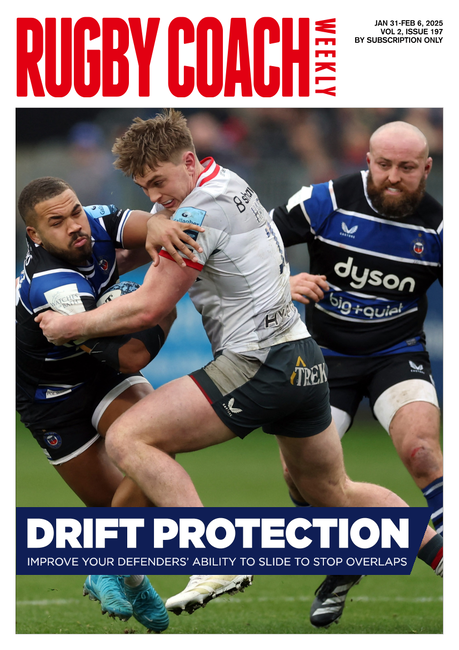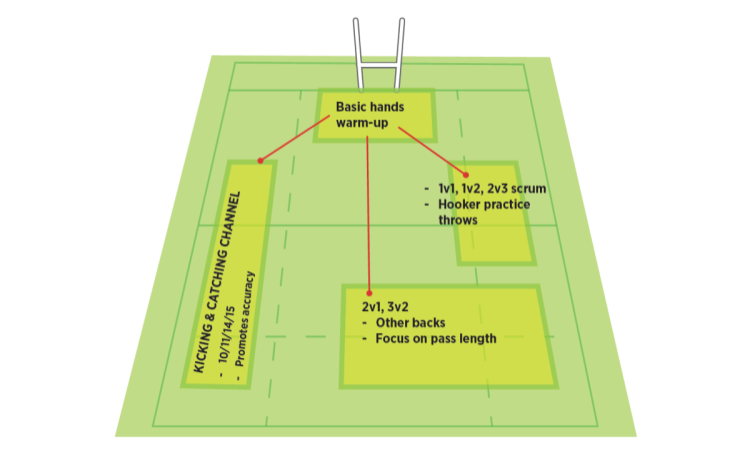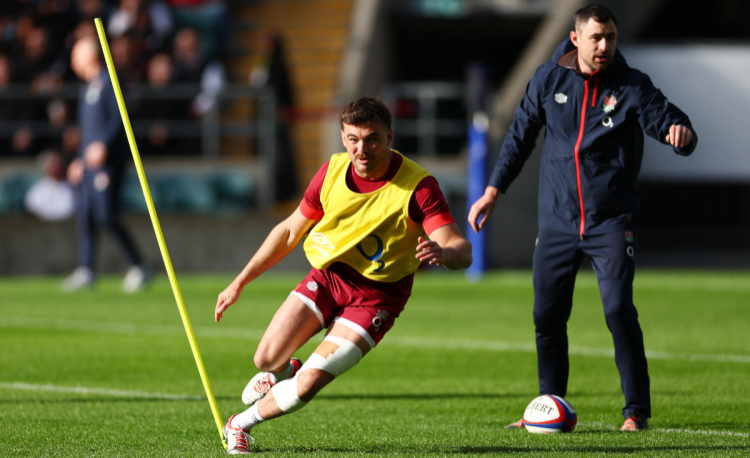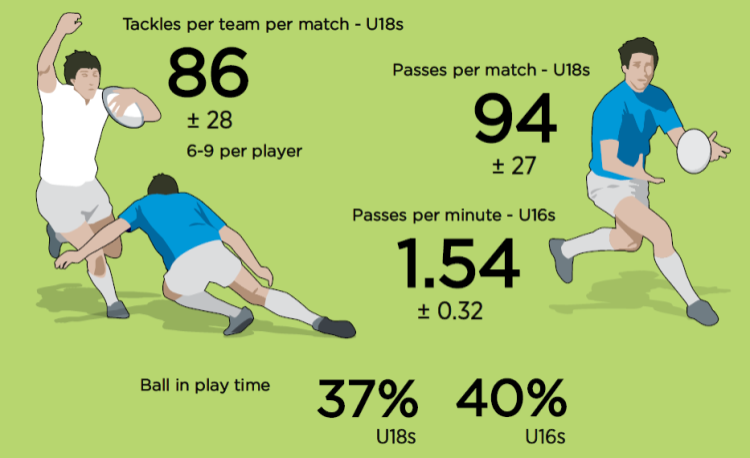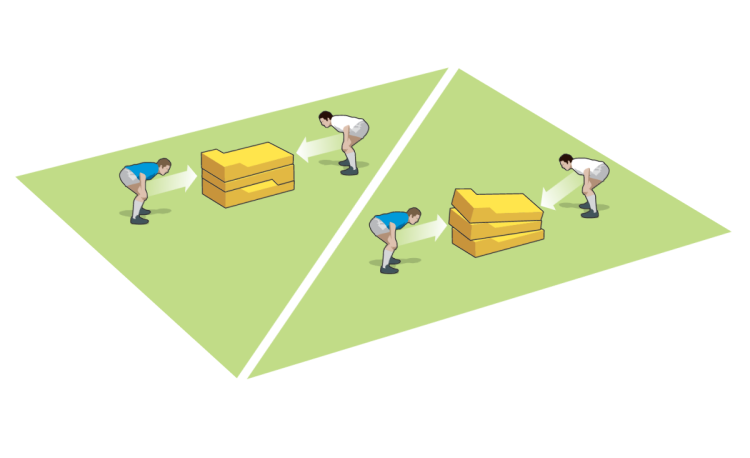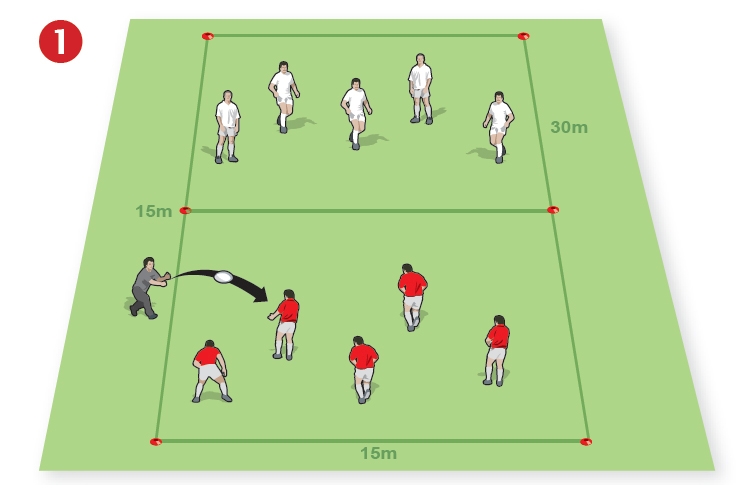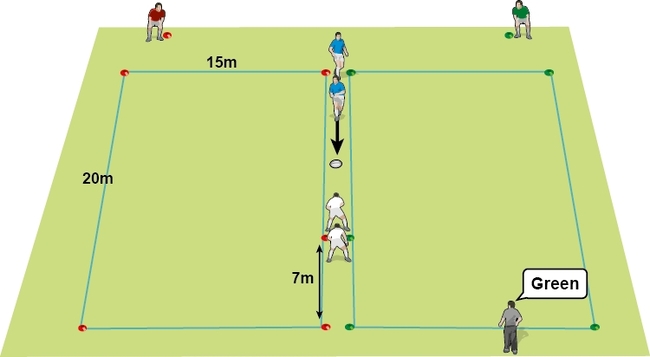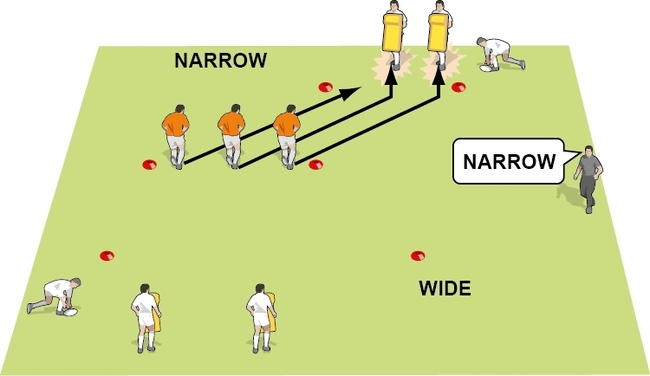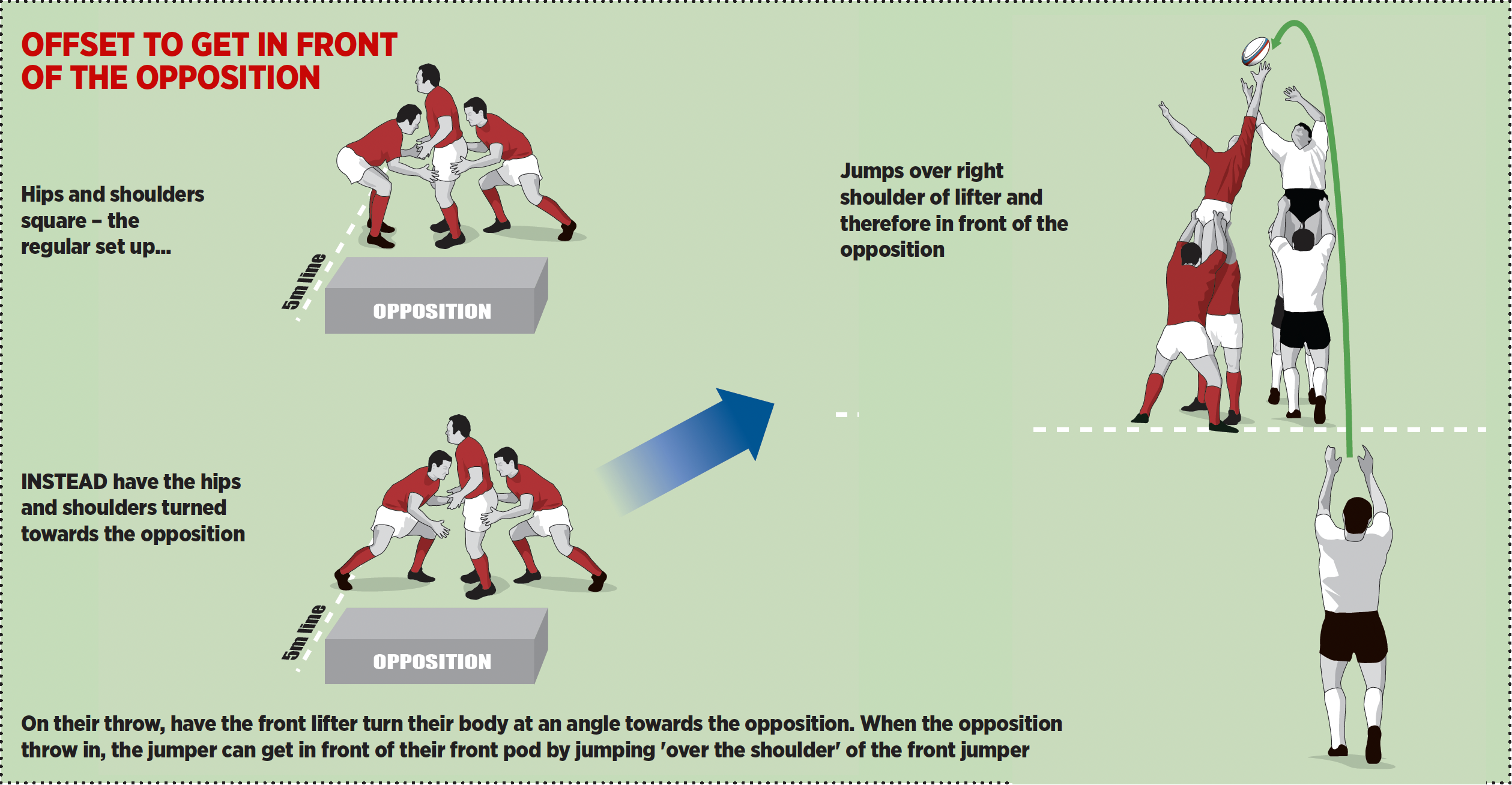Drills to maximise rugby player speed
Fitness & Conditioningby Dan Cottrell

The first thing to kick into touch is to think about a 100m sprint. Running in a straight line is not what is required. Rugby player agility and acceleration are crucial. Here are five key elements to boost rugby player speed.
1. Acceleration
Players need to accelerate quickly, perhaps to get to the break down or to move past an opponent. Acceleration comes from moving the feet quickly, gradually increasing stride length as the player moves forward. Practise these rugby skills by using speed ladders or cones in your drills, which limit the stride length in the first few yards, before exploding away. Jumping down from a chair and driving away is another possibility.
2. High maximum speed
Once away from a tackle situation, a player needs to increase their maximum speed. A combination of leg strength and leg speed is key. Good rugby drills are ones that mimic a sprinting action and are probably best done between the tryline and 22m line (see the drill tips below). A good period of recovery between each rugby drill is essential to promote an increased level of technique.
3. Reaction speed
The ability to react to different situations quickly. Players move at speed to a certain point on a visual or verbal command. Visual commands are better, because they are more specific. Touching a ball on the ground or throwing a ball in the air could be good visual commands. It is also good to have the players moving around before the command is given, again replicating a game situation.
4. Changing direction
Avoid too many straight-line rugby coaching drills, incorporate changes in direction as much as possible. Running around the posts, or corner flags is one way.
5. Speed endurance tips
Players need to produce bursts of pace a number of times during the game. The pitch can be used to provide natural breaks for interval training drills, for instance, jog, then sprint, then jog, and so on, changing at every line.
Tips for rugby coaching drills
- Bum kicks, with fast leg speed, but using the arms to pump.
- High knees, but not leaning back.
- For greater length in stride – skips, bounds and hops.
- For greater height – skipping as high as possible.
- Emphasise quality, not quantity.
Two players jog together forwards and backwards between two cones 5m apart. On the shout "ORANGES" they race to a cone 15m in front of them. On "LEMONS" they run to a cone 15m behind them. For multi-directional games, then different "fruit" and other cones can be introduced.
Click here for more rugby sprinting tips and drills.
Newsletter Sign Up
Coaches Testimonials

Gerald Kearney, Downtown Las Vegas Soccer Club

Paul Butler, Florida, USA

Rick Shields, Springboro, USA

Tony Green, Pierrefonds Titans, Quebec, Canada
Subscribe Today
Be a more effective, more successful rugby coach
In a recent survey 89% of subscribers said Rugby Coach Weekly makes them more confident, 91% said Rugby Coach Weekly makes them a more effective coach and 93% said Rugby Coach Weekly makes them more inspired.
Get Weekly Inspiration
All the latest techniques and approaches
Rugby Coach Weekly offers proven and easy to use rugby drills, coaching sessions, practice plans, small-sided games, warm-ups, training tips and advice.
We've been at the cutting edge of rugby coaching since we launched in 2005, creating resources for the grassroots youth coach, following best practice from around the world and insights from the professional game.


